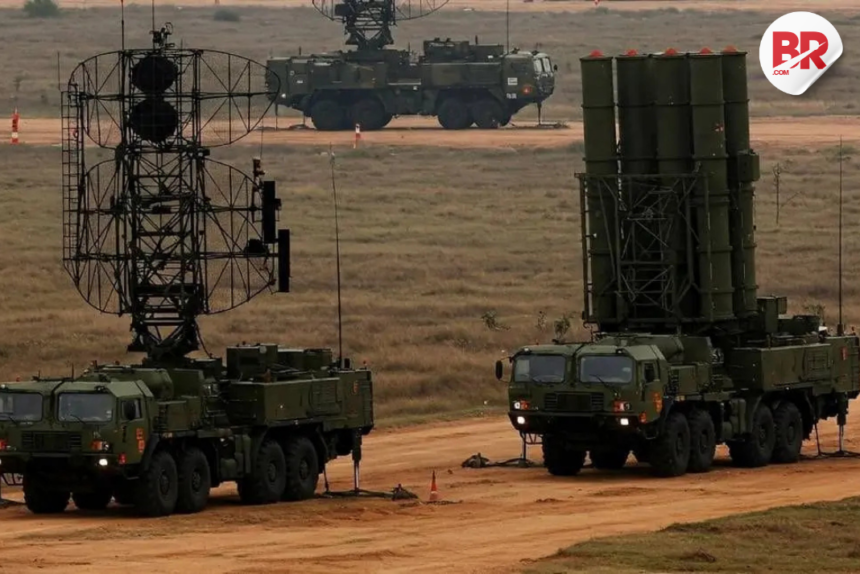Recent nights, India’s skies lit up—but not with fireworks. Pakistan tried to launch a coordinated drone and missile assault on key Indian military zones. In response, India unleashed its most advanced air defense weapon: the S-400 Triumf.
And just like that, the threat vanished.
The S-400 Triumf, also called “Sudarshan Chakra” by Indian forces, is no ordinary missile system. Developed by Russia’s Almaz-Antey and acquired by India under a $5.4 billion deal in 2018, it’s built for one thing: denying enemy aircraft the luxury of even breathing near our airspace.
How We Feeling This Morning India? 🇮🇳🛡🇷🇺#S400 #OperationSindoor2 #NoContextGeopolitics pic.twitter.com/6zfNbJiEsg
— RT_India (@RT_India_news) May 9, 2025
What just happened
According to the Ministry of Defence, Pakistan targeted over a dozen Indian cities—Avantipura, Srinagar, Jammu, Amritsar, Jalandhar, and even Bhuj—using a mix of drones and missiles. These weren’t warning shots. They were meant to inflict real damage.
But here’s the twist: India saw them coming. And with the S-400’s advanced radar that can track up to 300 threats and hit 36 of them simultaneously, the response was swift. Every incoming threat was neutralised before it could reach critical targets.
For the average Indian, this means one thing: we’re protected. Unlike the old days when our radar systems struggled and responses came late, today’s India is equipped, alert, and always ready.
India’s Sky Shield: What makes the S-400 Triumf special?
The S-400 is like the iPhone of missile systems—sleek, mobile, and deadly efficient. It can engage threats from as far as 400 km away, and from as high as 30 km—near the edge of space.
Its key features include:
- Multi-layered radar tracking
- Capability to hit fast jets, drones, ballistic missiles, and even low-flying cruise missiles
- Mounted on trucks for high mobility—fire, move, repeat
- Setup time: just 5-10 minutes
The system deployed in Punjab was the first of five units India purchased. And based on its performance this week, it’s already earned its keep.
Also Read Operation Payback: S-400’s 600km Kill Radius Makes Pakistan’s Drones Look Like Toys
America’s Patriot vs India’s Triumf
The US equivalent, the MIM-104 Patriot and THAAD, maxes out at 200 km in range—only half of what the S-400 offers. Even US analysts acknowledge the S-400’s edge in flexibility and effectiveness.
China’s HQ-9 also lags behind. Despite similar surface appeal, it suffers from limited detection range and fewer missile options.
When Pakistan launched its “low-risk, high-drama” drone salvo, it was probably expecting scattered resistance. Instead, it walked into a digital minefield, where every move was tracked, calculated, and crushed.
India Hits Back—Hard
The very next morning, Indian Armed Forces struck Pakistan’s own air defense systems across the border. An official release confirmed the destruction of assets in Lahore. “Our response has been in the same domain, with same intensity,” the statement said.
That’s India 2025: measured, modern, and merciless when needed.
No More “Restraint” Narrative
Let’s get real. For decades, India was praised for “strategic restraint”—which often meant we endured, not acted. Not anymore.
The deployment of the S-400 isn’t just a defense decision—it’s a declaration: India’s borders aren’t lines in the sand. They’re red lines no one crosses without consequences.
Once mocked for importing weapons, India today is deploying them with precision and pride. The S-400 Triumf isn’t just a Russian system in Indian hands—it’s a symbol of a new India: bold, tech-savvy, and unafraid to draw the line.
This time, Pakistan crossed it. And India responded—with a thunderclap.
Also Read Blood Money: IMF Loans Pakistan $1B to Bomb Indian Civilians




